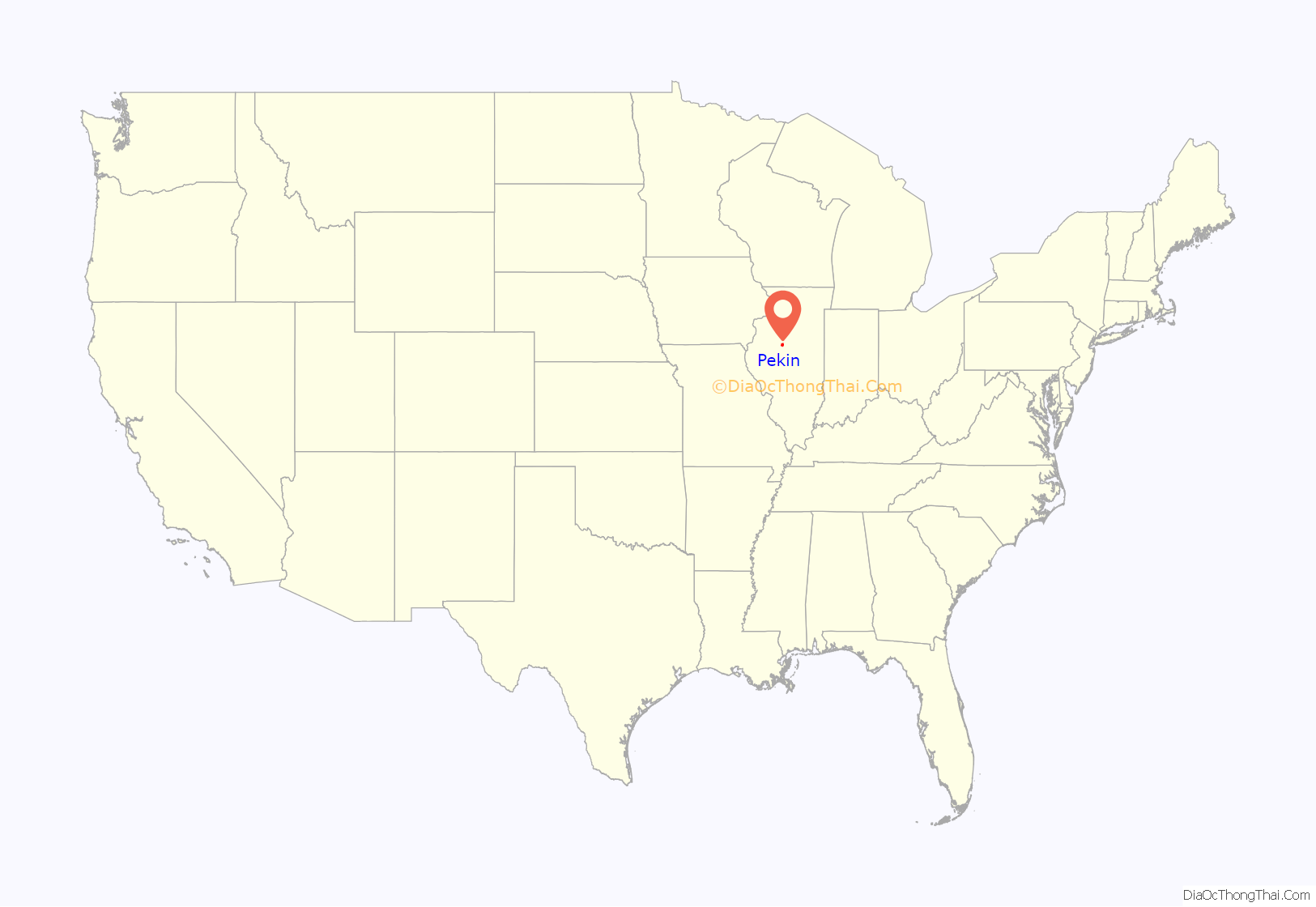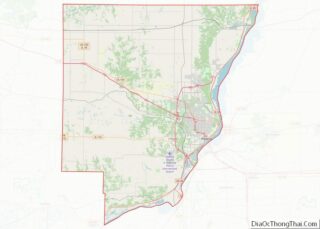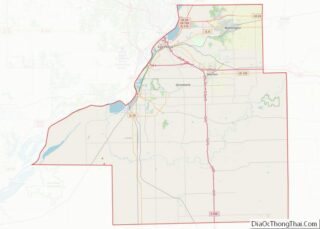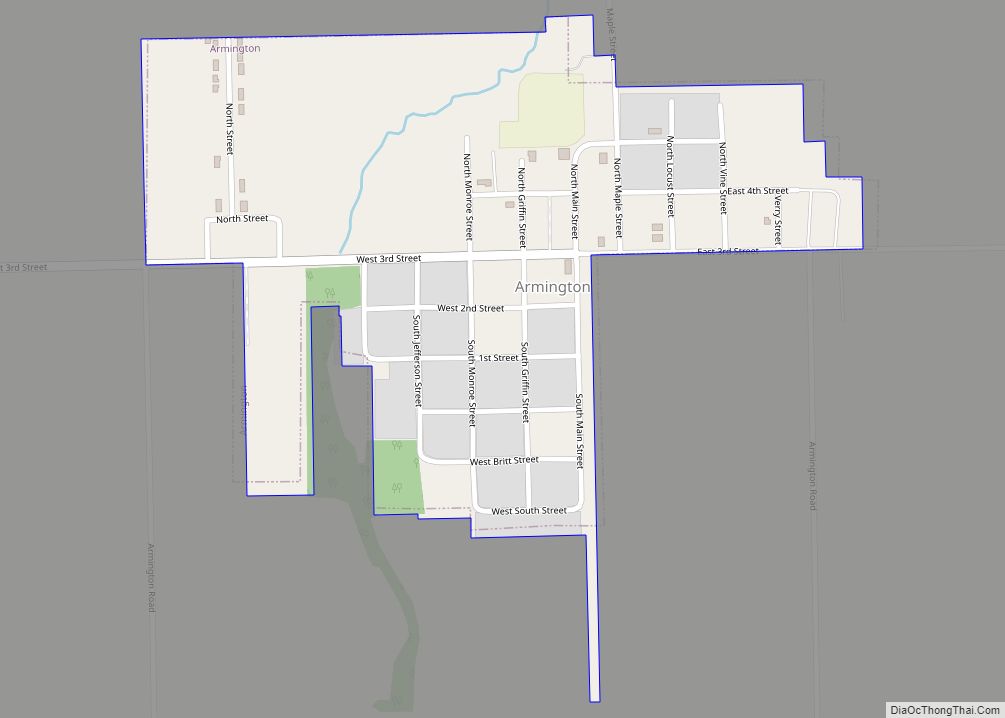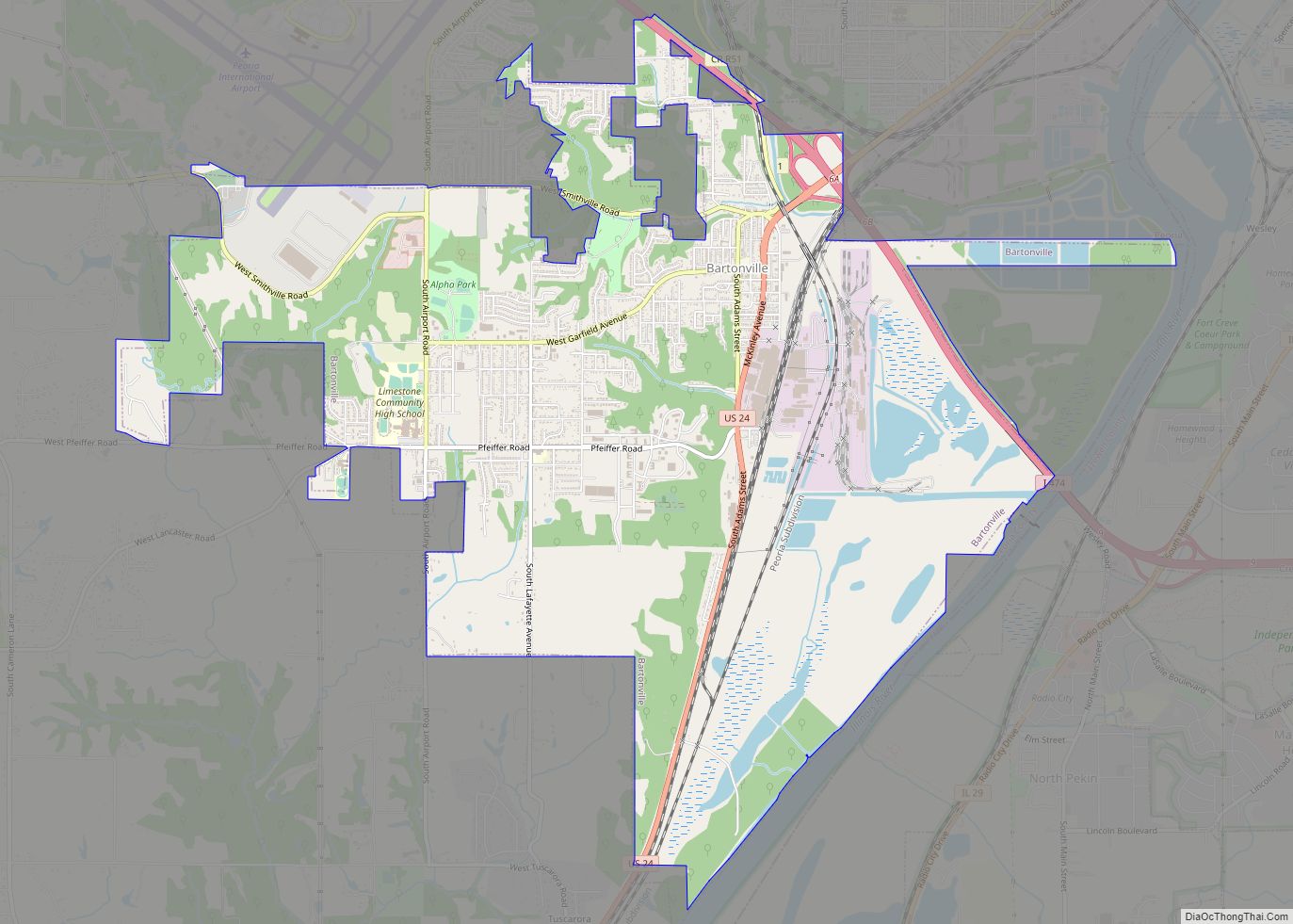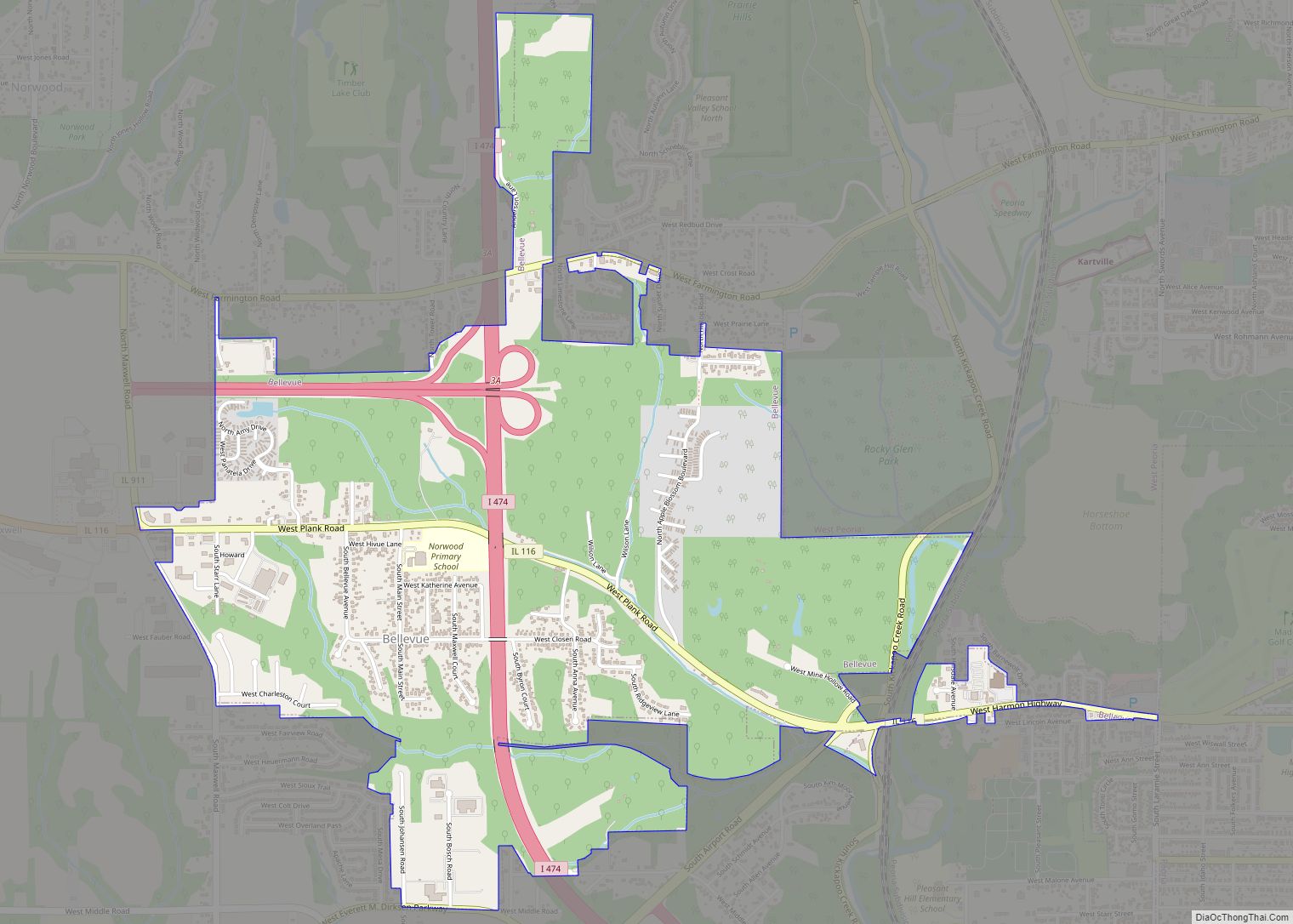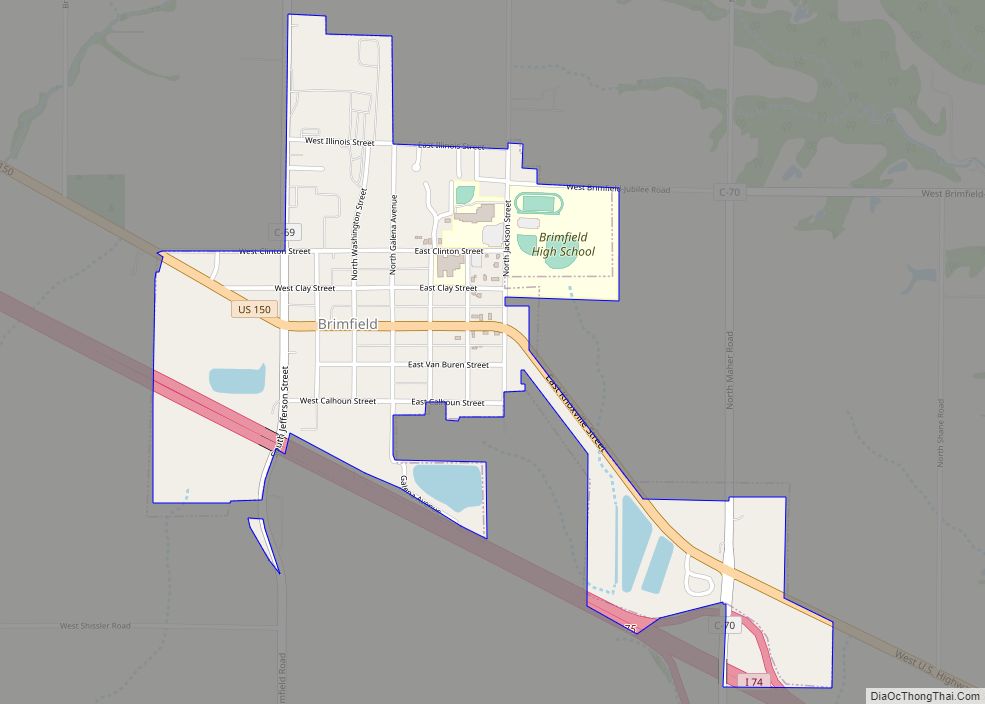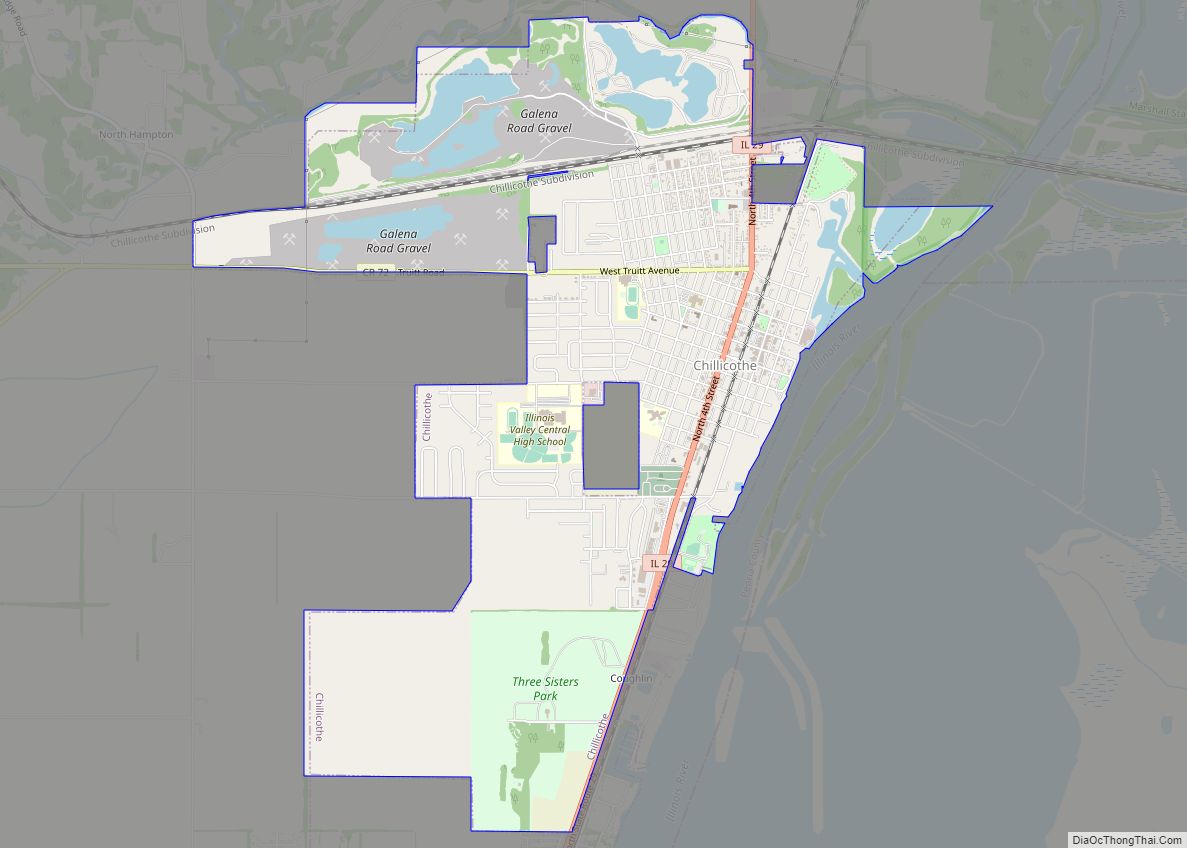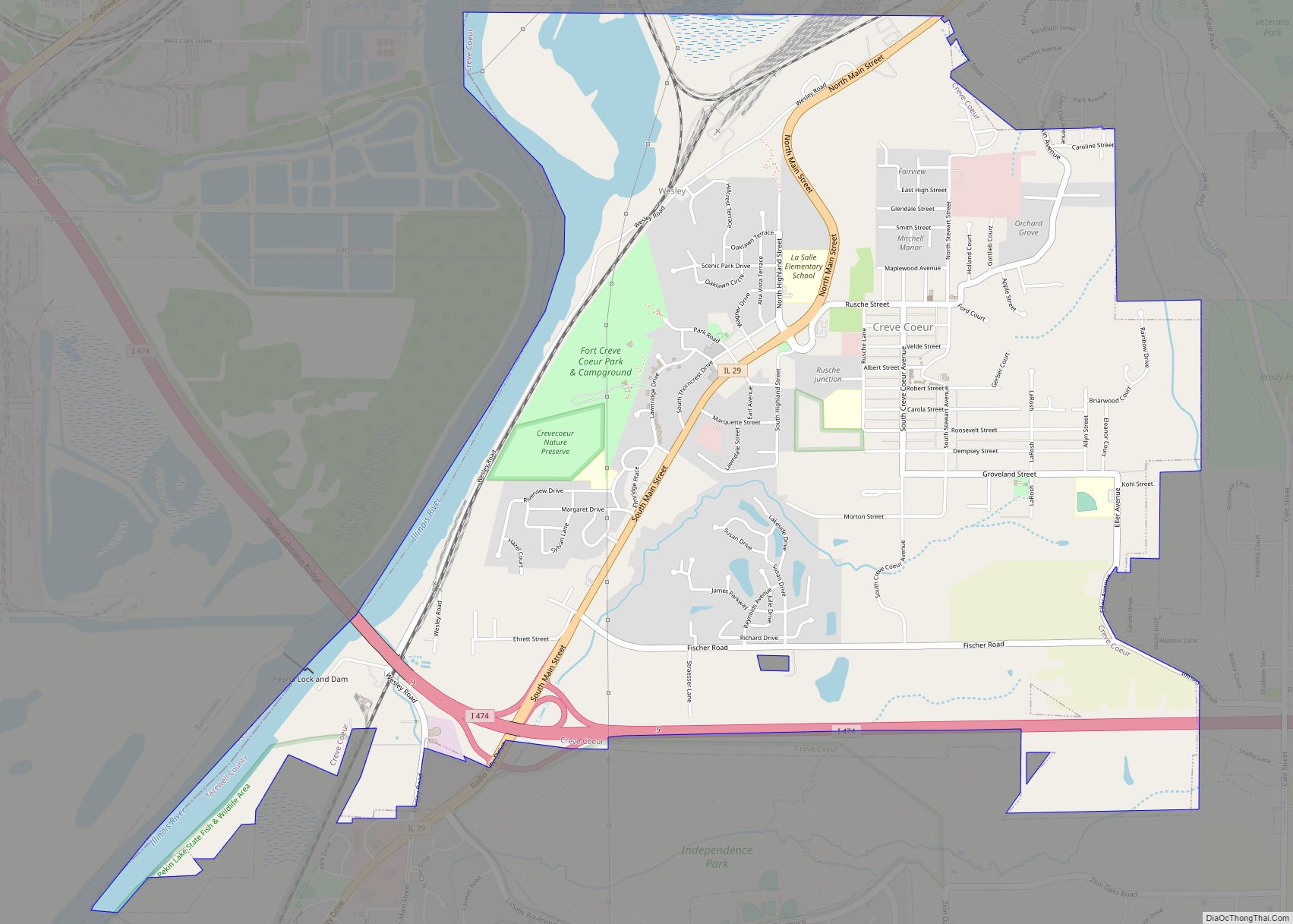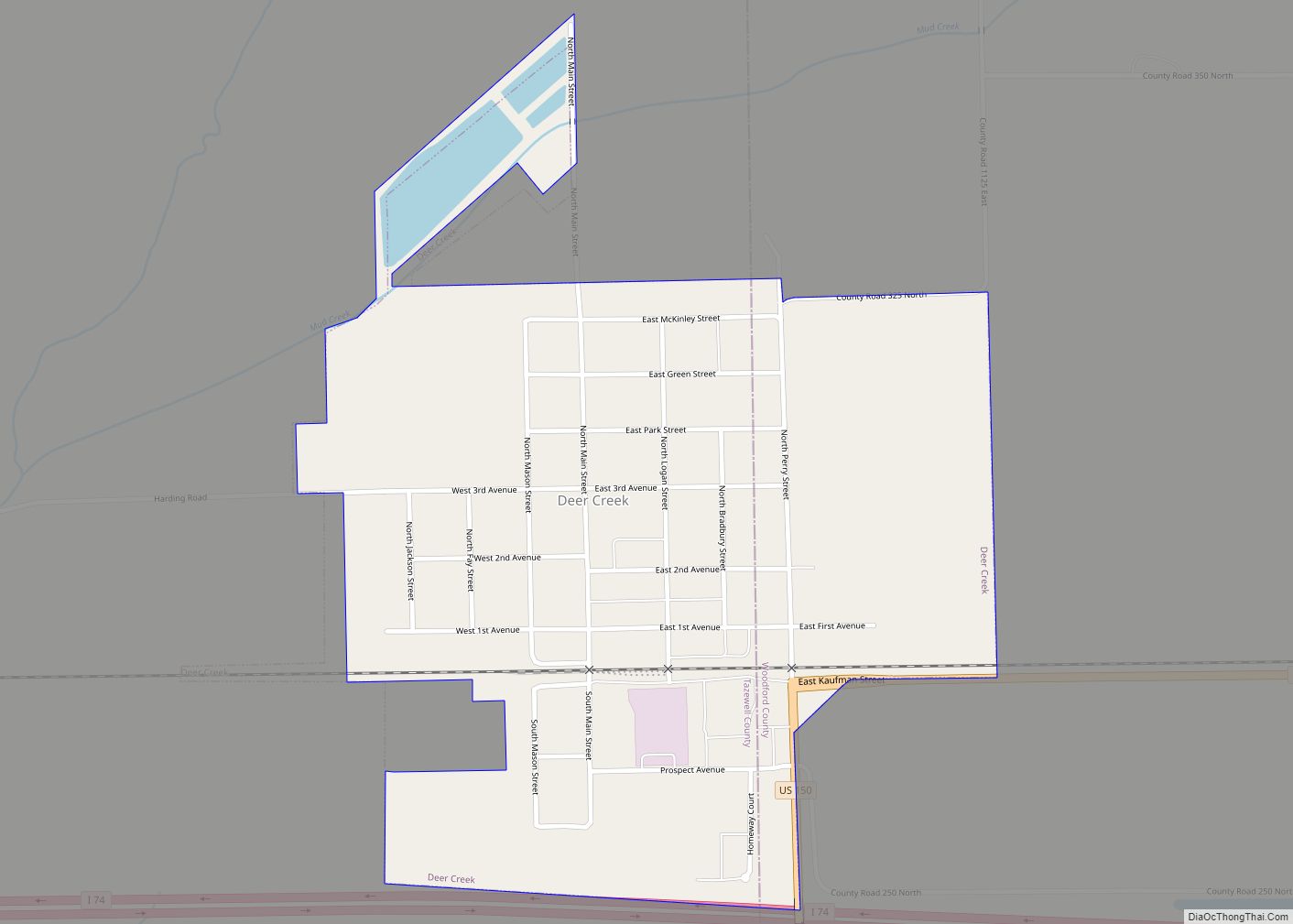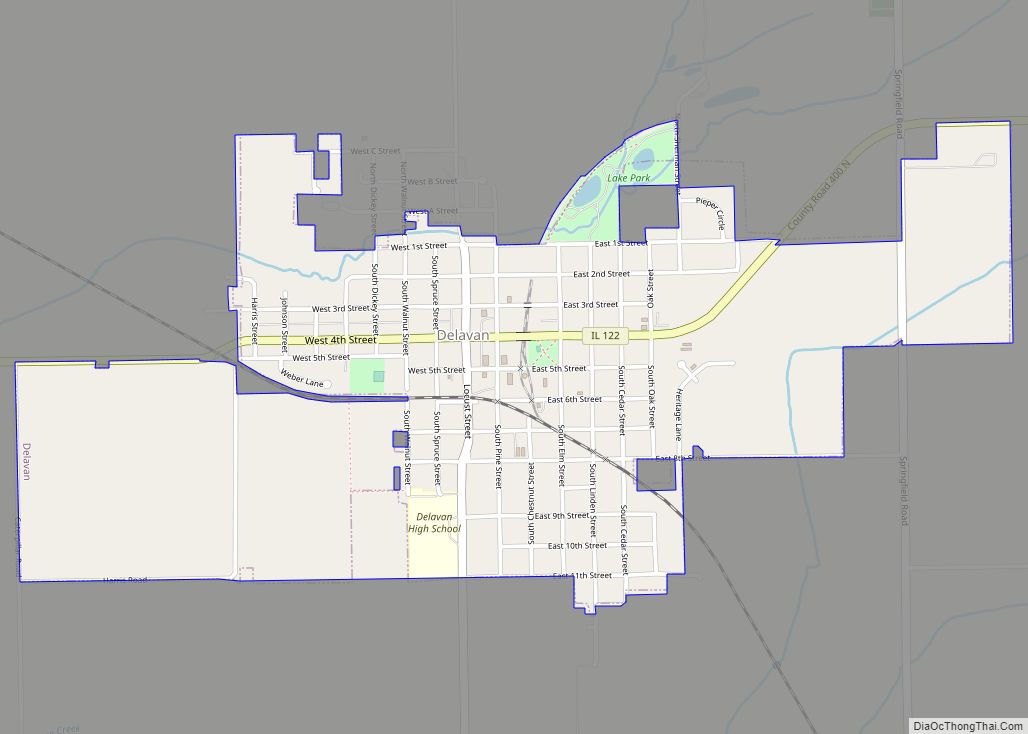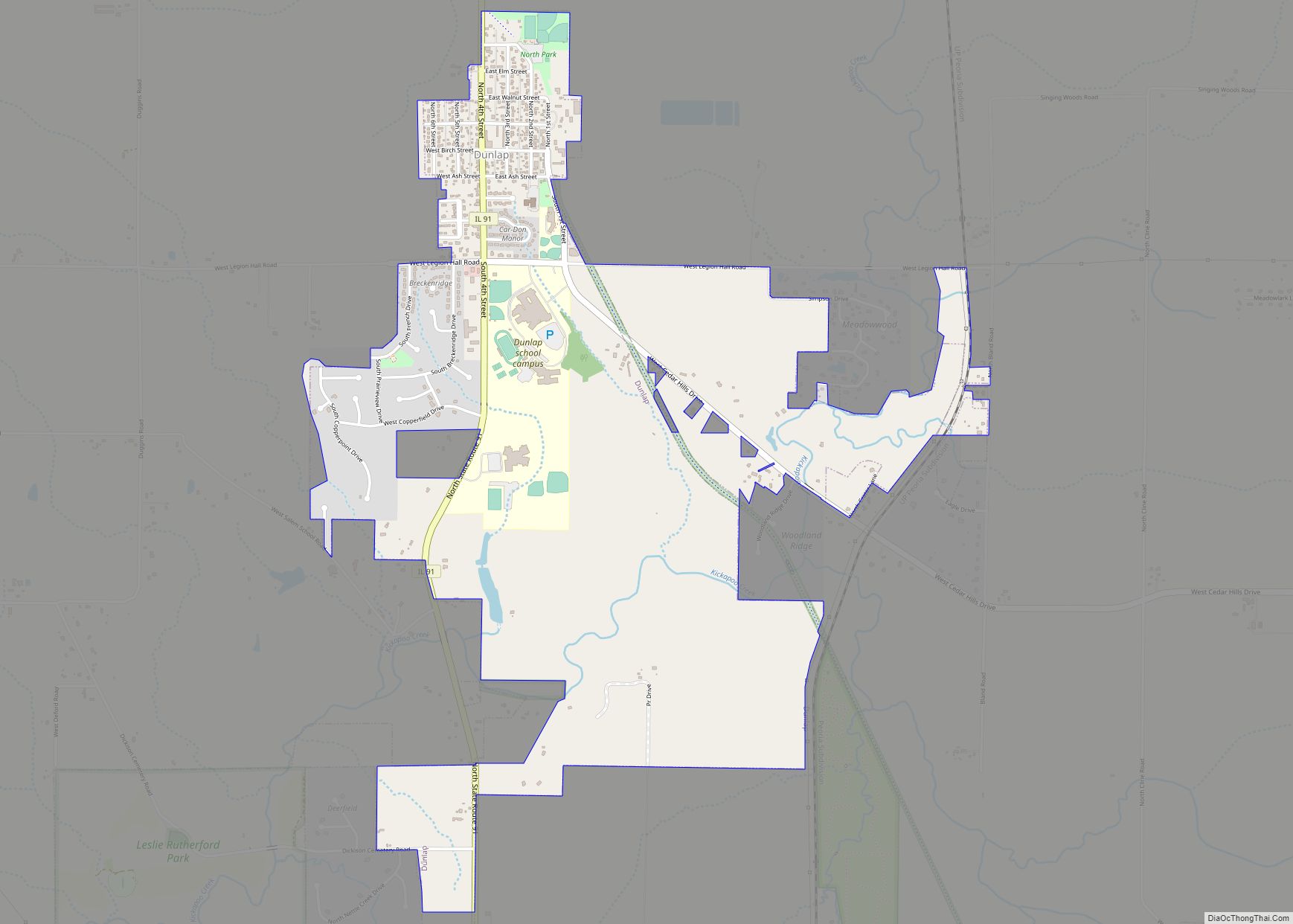Pekin (/ˈpiːkɪn/) is a city in and the county seat of Tazewell County in the U.S. state of Illinois. Located on the Illinois River, Pekin is the largest city of Tazewell County and the second most populous municipality of the Peoria metropolitan area, after Peoria itself. As of the 2020 census, its population is 31,731. A small portion of the city limits extend into Peoria County. It is a suburb of Peoria and is part of the Peoria Metropolitan Statistical Area.
Pekin’s Mineral Springs Park is near Pekin Hospital and the Miller Senior Center. The city is the location of a high-rise residential facility of the United Auto Workers; the location of the Pekin Federal Correctional Institution; and the headquarters of a regional insurance company, Pekin Insurance.
| Name: | Pekin city |
|---|---|
| LSAD Code: | 25 |
| LSAD Description: | city (suffix) |
| State: | Illinois |
| County: | Peoria County, Tazewell County |
| Elevation: | 538 ft (164 m) |
| Land Area: | 15.72 sq mi (40.71 km²) |
| Water Area: | 0.85 sq mi (2.20 km²) |
| Population Density: | 2,019/sq mi (5,229.19/km²) |
| Area code: | 309 |
| FIPS code: | 1758447 |
| GNISfeature ID: | 2396172 |
| Website: | www.ci.pekin.il.us |
Online Interactive Map
Click on ![]() to view map in "full screen" mode.
to view map in "full screen" mode.
Pekin location map. Where is Pekin city?
History
Origins of Pekin
Farmer Jonathan Tharp, who came from Ohio, was the first non-native American resident of what would become Pekin, building a log cabin in 1824 on a ridge above the Illinois River at a site near the present foot of Broadway Drive. Franklin School was later erected near this site. Other settlers soon joined him, including his father Jacob Tharp who arrived from Ohio in 1825. They lived near Chief Shabbona’s large Indian village of about 100 wigwams, populated primarily by Potawatomi, which was situated along Gravel Ridge, on the eastern shore of what is today Pekin Lake in northwest Pekin.
The county surveyor, William Hodge, measured and laid out a “town site” in 1827. In 1829, the plat was taken to Springfield and auctioned; the town site was awarded to Major Isaac Perkins, Gideon Hawley, William Haines and Major Nathan Cromwell. Major Cromwell’s wife, Mrs. Ann Eliza Cromwell, selected the name of Pekin. It has been stated that Mrs. Cromwell named the town “Pekin” because she thought Peking was on the exact opposite side of the world from the town she founded. In the 1800s, China and the United States were thought to be antipodes- or locations that were exactly opposite of each other on the globe. As such, towns were sometimes named after their supposedly antipodal locations. Another example is Canton, Ohio. “Peking” was often romanized as “Pekin”, as in other towns founded during the 1800s (such as Pekin, Ohio).
Nathan Cromwell named many of the city streets after the wives and daughters of early Pekin settlers. It was long held, as first expressed by W.H. Bates in the 1870 Pekin City Directory, that Cromwell was assisted by his wife Ann Eliza in the naming of the streets.
19th century
Pekin was the residence of Nance Costley, known to history as the first enslaved person to be freed with the help of Abraham Lincoln. She was auctioned off to Nathan Cromwell in 1827 and brought to Pekin. Her original case was part of a Probate Court hearing regarding the estate when he died in 1836. David Bailey, a local merchant of abolitionist leanings, sought the help of an attorney friend after he (and Nance) lost the case. Abraham Lincoln argued the case in 1841 at the Illinois Supreme Court, citing the Illinois Constitution and Northwest Ordinance. Justice Breese determined that Nance was a free person and reversed the Circuit Court ruling, stating that “it is a presumption of law, in the State of Illinois, that every person is free, without regard to color,” and “the sale of a free person is illegal”. After her freedom was legally secured, she remained in Pekin with her husband and children. In William H. Bates’ 1870 Pekin City Directory, Nance was included in an entry of notable citizens:
Lincoln attended the Whig Convention that was held in Pekin on May 1, 1843. He was among several local Whig politicians who wanted to serve in the U.S. Congress. To keep from splitting the Whig vote, the competitors agreed to support each other for one term each in Congress. Lincoln ran and was elected to the 30th United States Congress in 1846, and retired at the end of the term. This single term in Congress was Lincoln’s only experience in Washington before he was elected president.
Although Illinois was a “free” state, pro-slavery sentiment was predominant throughout southern and central Illinois, which had been largely settled by Southerners, some of whom were slaveholders before the state was admitted to the union. Cities with pro-slavery sentiment included Peoria and Pekin. According to the 1949 Pekin “Centenary,” p. 15,
Nonetheless, there was abolitionist sentiment in Pekin. Among Pekin’s abolitionist leaders was Dr. Daniel Cheever, who performed Underground Railroad activities in his office at the corner of Capitol and Court streets (in addition to his property in Delavan which was an Underground Railroad depot) and the brothers Samuel and Hugh Woodrow. (Catherine Street in Pekin is named for Samuel’s wife, and Amanda Street is named for Hugh’s wife). The sentiment was bolstered by the German immigrants that arrived in the area after the Revolutions of 1848; while there were small groups that supported slavery, finding them would prove difficult as the German community disapproved of the idea.
During the Civil War, the inhabitants of Pekin were divided between the pro-slavery element, who favored the Confederacy, and the abolitionist and pro-Union element. Early in the war, the secessionist “Knights of the Golden Circle” openly supported secession and slavery in Pekin. The 1949 Pekin Centenary, p. 15, says the Knights were “aggressive and unprincipled,” and “those who believed in the Union spoke often in whispers in Pekin streets and were wary and often afraid.” As a response to the Knights’ influence, Dr. Cheever and 10 other men gathered at 331 Court Street in Pekin on June 25, 1862 to establish the first council of the Union League of America. The goal of the League was to promote patriotism and loyalty to the Union in the Civil War and the abolition of slavery. Its members hoped to counter Northern disillusionment with President Lincoln’s military policies after early Union defeats in the American Civil War. Although closely allied with the Republican Party, the League sought to enroll all Union supporters, regardless of party. The anti-slavery Germans of Pekin took an active role in the Union League in their city.
German immigration to Pekin
After the Revolutions of 1848, many people from the German Confederation immigrated to the United States. During the decade of the 1850s, a 118.6% increase in the German-born population was observed. In the 1850 Tazewell County census, nearly 14% of Pekin’s population was listed as originating from “Germany” (272 individuals of the 1,891 listed). In the 1860 Tazewell County census, the portion of Pekin that originated from Germany increased to 22% (774 individuals of the 3,467 listed). The 1860 census also changed the designation from “Germany” to the various states of the German Confederation- revealing that 31% of the German immigrants came from Hanover, with Darmstadt trailing behind at 22% of the population.
Several German citizens of Pekin held status in the town. Frederick P. Siebens, who came to Pekin in 1868, was stockholder and director of T. & H. Smith Company (a blacksmith, woodworking, and wagon building plant). He was also listed as a foreman blacksmith in the 1887 Pekin City Directory. John Herget moved to the United States from Hesse-Darmstadt, then returned to Germany and brought his family back with him to Pekin in 1869. He became a stockholder in Farmers National Bank and was Mayor of Pekin in 1873 and 1874. John’s younger brother, George Herget, was the President of the Globe Distilling Company, the Pekin Electric Light Company, and the Pekin Steam Coopering Company. He settled in Pekin in 1853 after traveling from Gettysburg, Pennsylvania. Habbe Vander Velde, one of the original founders of T. & H. Smith Company, served several terms on Pekin’s city council, was Chairman of the Finance Committee, and a member of the Committee on Bridges and Licenses. He moved to Pekin in 1851. Aeilt Van Boening was the city’s representative for the Anheuser-Busch Brewing Company of St. Louis. He moved to Pekin in 1867 to be with his brothers, who had settled there in 1866. Van Boening was also listed as a proprietor for City Truck Line in the 1887 Pekin City Directory.
George Herget and Habbe Vander Velde were among those on the “Roll of Honor” in the 1908 Pekin City Directory. Those who were listed were in the 1861 Pekin City Directory and lived continuously or retained citizenship in Pekin since. The list describes those listed to “represent all the varied trades and professions which were essential to the building up of our beautiful city”.
20th century to present
In an early 20th-century revival, the Ku Klux Klan recruited new members as a fraternal organization, opposing new immigrants from southern and eastern Europe, and becoming influential in rapidly industrializing urban areas in the Midwest and West, as well as in the South. It had numerous members in Pekin and other Illinois cities. It was during this period that leading Klansmen took over ownership of the city newspaper, the Pekin Daily Times; they used it as an organ of Klan viewpoints. They sold off the paper within a few years.
The city had an identity and reputation as a sundown town; it was known to be hostile to black residents and few settled there. On the other hand, some Pekin church pastors participated in the civil rights marches of the 1960s, and U.S. Senator Everett Dirksen from Pekin was integral to achieving passage of the Civil Rights Act of 1964. In 2011, Laurie Barra became the first female mayor of Pekin.
Pekin Road Map
Pekin city Satellite Map
Geography
According to the 2010 census, the city has a total area of 15.14 square miles (39.2 km), of which 14.56 square miles (37.7 km) (or 96.17%) is land and 0.58 square miles (1.5 km) (or 3.83%) is water.
Pekin lies on the Illinois River, and its John T. McNaughton Bridge connects the city to a small area of land the city has annexed in Peoria County. Nearby towns include North Pekin, Marquette Heights, Creve Coeur, Groveland, Tremont, Morton, Washington, Lincoln, East Peoria, Peoria, Bartonville, Mapleton, Manito, Delavan, Dillon, Green Valley, Hopedale, and South Pekin.
Climate
Pekin, much like the rest of central Illinois, experiences a hot-summer continental climate. Summers are warm to hot and humid with occasional heat waves. Winters are cold (sometimes severely) and snowy, though there are plenty of clear days in the winter. There is no “dry” season- precipitation is evenly distributed throughout the year, though late spring may be wetter than the rest of the year. July is the warmest month, while January is the coolest.
See also
Map of Illinois State and its subdivision:- Adams
- Alexander
- Bond
- Boone
- Brown
- Bureau
- Calhoun
- Carroll
- Cass
- Champaign
- Christian
- Clark
- Clay
- Clinton
- Coles
- Cook
- Crawford
- Cumberland
- De Kalb
- De Witt
- Douglas
- Dupage
- Edgar
- Edwards
- Effingham
- Fayette
- Ford
- Franklin
- Fulton
- Gallatin
- Greene
- Grundy
- Hamilton
- Hancock
- Hardin
- Henderson
- Henry
- Iroquois
- Jackson
- Jasper
- Jefferson
- Jersey
- Jo Daviess
- Johnson
- Kane
- Kankakee
- Kendall
- Knox
- La Salle
- Lake
- Lake Michigan
- Lawrence
- Lee
- Livingston
- Logan
- Macon
- Macoupin
- Madison
- Marion
- Marshall
- Mason
- Massac
- McDonough
- McHenry
- McLean
- Menard
- Mercer
- Monroe
- Montgomery
- Morgan
- Moultrie
- Ogle
- Peoria
- Perry
- Piatt
- Pike
- Pope
- Pulaski
- Putnam
- Randolph
- Richland
- Rock Island
- Saint Clair
- Saline
- Sangamon
- Schuyler
- Scott
- Shelby
- Stark
- Stephenson
- Tazewell
- Union
- Vermilion
- Wabash
- Warren
- Washington
- Wayne
- White
- Whiteside
- Will
- Williamson
- Winnebago
- Woodford
- Alabama
- Alaska
- Arizona
- Arkansas
- California
- Colorado
- Connecticut
- Delaware
- District of Columbia
- Florida
- Georgia
- Hawaii
- Idaho
- Illinois
- Indiana
- Iowa
- Kansas
- Kentucky
- Louisiana
- Maine
- Maryland
- Massachusetts
- Michigan
- Minnesota
- Mississippi
- Missouri
- Montana
- Nebraska
- Nevada
- New Hampshire
- New Jersey
- New Mexico
- New York
- North Carolina
- North Dakota
- Ohio
- Oklahoma
- Oregon
- Pennsylvania
- Rhode Island
- South Carolina
- South Dakota
- Tennessee
- Texas
- Utah
- Vermont
- Virginia
- Washington
- West Virginia
- Wisconsin
- Wyoming
